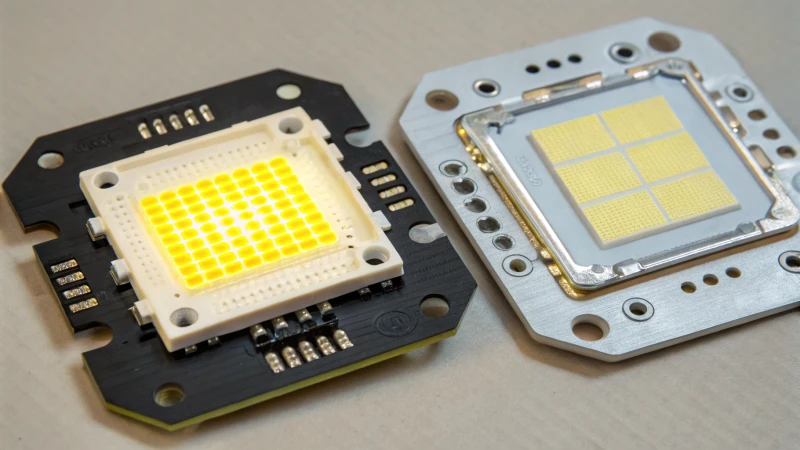When it comes to modern electronics, SMD (Surface-Mounted Device) components are at the forefront of innovation. These components are essential in making devices smaller, faster, and more efficient. Among the many SMD components, SMD LEDs are particularly crucial, as they play a key role in various electronic devices, from indicators to displays. One aspect that can sometimes be confusing for engineers and hobbyists is the polarity of SMD LEDs. In this guide, we’ll explore SMD components and focus on the importance of understanding SMD LED polarity.
What are SMD Components?
SMD components are a type of electronic component designed to be mounted directly onto the surface of a PCB (Printed Circuit Board). Unlike traditional through-hole components, SMD components do not require holes to be drilled in the PCB. Instead, they are soldered directly onto the board’s surface using a special soldering process.
SMD components come in a wide variety of forms and functions. Some of the most commonly used SMD components include:
- Resistors
- Capacitors
- Inductors
- Diodes
- Transistors
- LEDs
The main advantages of SMD components include their small size, higher performance, and suitability for automated assembly processes. Because they are much smaller than their through-hole counterparts, SMD components are used in almost all modern electronic devices, including smartphones, computers, and automotive electronics.
What is SMD LED Polarity?
SMD LEDs are a type of light-emitting diode that is designed to be mounted directly onto a PCB. Like all LEDs, SMD LEDs have polarity, which means they have a positive (anode) and negative (cathode) side. Correctly identifying and connecting these sides is crucial for the proper functioning of the LED.
SMD LED polarity refers to the orientation in which the LED must be installed on the PCB to work correctly. If the polarity is reversed, the LED will not light up or may even get damaged.
How to Identify SMD LED Polarity?
Identifying the polarity of an SMD LED is easier than it seems, but it does require attention to detail. Here are the common ways to identify the positive (anode) and negative (cathode) terminals of SMD LEDs:
- Markings on the Package:
- Anode (Positive): The anode of an SMD LED is usually marked with a small dot or a line on the PCB.
- Cathode (Negative): The cathode is often identified by a flat edge on the LED’s package.
- Internal Diode Construction:
- Anode (Positive): The anode is typically the longer lead if the LED is in a package with leads, but in SMD LEDs, it’s often the pad with a marked symbol.
- Cathode (Negative): The cathode is often the shorter lead or the flat side of the LED.
- Polarity Arrows:
- Some SMD LEDs come with small arrows or symbols printed next to the component to indicate polarity. These can help you determine which side is the positive (anode) and which is negative (cathode).
- Datasheets:
- Always consult the datasheet of the specific SMD LED you are using. The datasheet will provide precise information about the polarity, the correct voltage, and current ratings.
Why is SMD LED Polarity Important?
Understanding and correctly installing the SMD LED polarity is vital for several reasons:
- Proper Functionality:
- If the LED is installed with reversed polarity, it will not light up. In some cases, reversing polarity can cause the LED to burn out.
- Prevent Damage:
- Reversed polarity may not only prevent the LED from lighting up but could also damage the component permanently. SMD LEDs are delicate, and applying incorrect voltage or current can cause them to fail.
- Device Safety:
- Incorrect polarity may lead to malfunctioning of the entire device, especially in circuits where LEDs serve as indicators or part of a larger feedback loop. This can affect the performance and safety of the device.
Tips for Working with SMD Components and SMD LED Polarity
Here are a few tips to keep in mind when working with SMD components and SMD LED polarity:
- Use a Magnifying Glass or Microscope: SMD components are small, and sometimes the markings are hard to see. A magnifying glass or a microscope can help you identify the correct polarity.
- Double-check the Polarities: Before soldering, always double-check the SMD LED polarity using the board markings and the component datasheet to avoid mistakes.
- Test Before Final Assembly: If possible, test your SMD LED connections before completing the soldering process. This way, you can ensure that everything works as expected.
- Use a Soldering Iron with Fine Tips: SMD components are small, and precision is crucial. Use a soldering iron with a fine tip to avoid damaging the components during assembly.
Conclusion
SMD components have revolutionized the electronics industry by making devices smaller, more efficient, and cost-effective. Understanding SMD LED polarity is critical for ensuring that your SMD LEDs function correctly and for preventing component damage. By recognizing the various ways to identify LED polarity and following best practices in component assembly, you can ensure that your devices perform to the highest standards.
If you’re looking for quality SMD components for your next project or need help with PCB assembly, reach out to PCBasic. We specialize in providing high-quality SMD components and assembly services to meet the needs of various industries. Let us help you bring your electronic projects to life!




